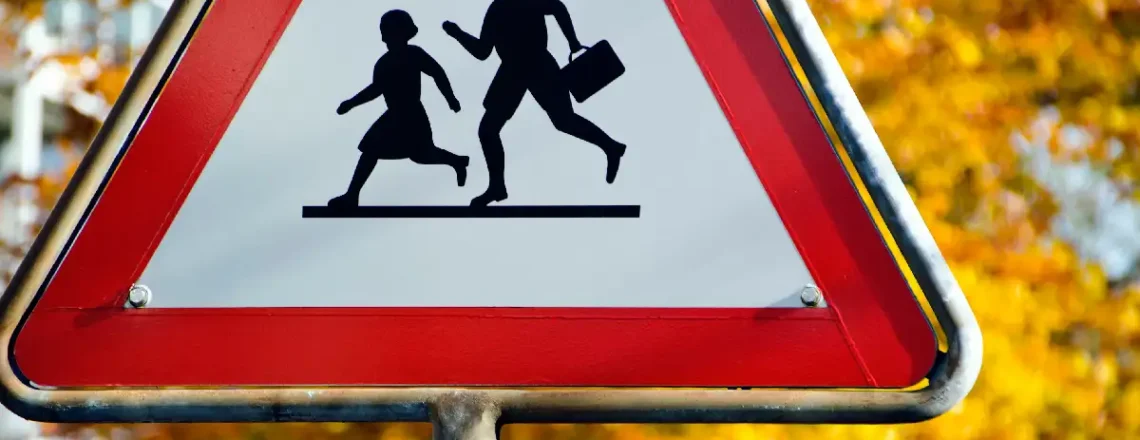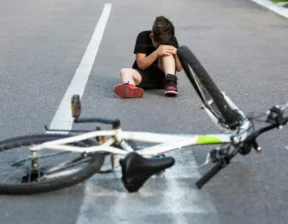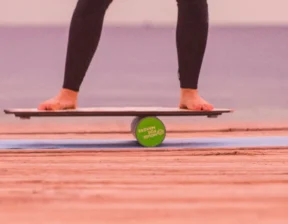
Extra 10% Off Orders above ₹2499 : Use Code: HUP10
Safest Comfort Helmet for Kids
Free Shipping | 7-Day Free Returns
Lifetime Warranty*
COD Available

by Prachi Gulati
Learning road safety is the most important skill to acquire before learning how to ride a bicycle. Road safety is not just an adult responsibility or a person driving, but a life skill everyone must begin learning early. Whether walking to school, playing in the park, or riding a bicycle, kids are constantly exposed to traffic. Teaching your kids road awareness strengthens them and gives them confidence and safety skills that can save lives. In this blog, let’s explore how to teach them about road awareness, traffic signs, signals, and all the smart moves that can make them stay safe on the road.
Read More: Top 5 Brands With Best Kids Bicycle Seats
Kids are naturally curious and energetic, but they may not always be aware of dangers in their surroundings. Roads and traffic can be unpredictable. Without proper guidance, kids are at higher risk of accidents. Teaching your kids road safety should be the first duty of every parent with growing kids. Road awareness builds many good habits and skills.
One of the easiest, quickest, and most effective ways to start road safety education for your little ones is by introducing traffic signs. Use visuals, games, or even a walk around your neighborhood to make it engaging and interesting.
Read More: Affordable, Stylish & Fast: 5 Best Gear Bikes Under 10,000
Pro Tip for young parents: Use flashcards or printable worksheets. It helps your kid learn faster; also, let them draw or color signs to reinforce memory.
The classic traffic light is an ideal starting point for younger kids to understand road behavior.
Read More: The Ultimate Guide to Kids’ Outdoor Gear in India
In addition to signs and signals, kids must develop a set of smart moves and tricks to make practical habits they can apply every day.
Before crossing any street, always encourage your kid to:
Kids must be taught to cross roads only at designated zebra crossings or pedestrian lights. Emphasize patience; never run across roads.
Teach kids not to use phones or headphones, or chase balls onto the road. Focus and alertness are crucial.
Read More: How Bicycling Makes Kids Happier and Smarter?
Explain the importance of staying off the road entirely and using footpaths whenever available.
If your kid rides a bicycle, they must learn to navigate roads responsibly. First, teaching the basics of road traffic. Enough for them to make wearing a helmet a must. Teach them the use of hand signals and make a habit of driving on the left side of the road (in India).
You can also introduce a simple checklist to tick before taking off. This habit would make it interesting for them to ride their vehicle while always being safe and sound. The checklist should include basic points such as
Here are a few creative and interactive ways to teach road awareness for kids:
Read More: Inline vs Quad Skates: Which Is Better for Your Kid?
Road awareness is not a one-time lesson; it’s a continuous conversation. When kids understand signs, signals, and safe behavior early on, they grow into responsible and alert road users. As caregivers, mentors, and citizens, it’s our job to give them the tools to navigate the world safely.
 27 August 2025
27 August 2025
While outdoor sports like cycling, skating, and skateboarding are often celebrated for building physical fitness...
 25 August 2025
25 August 2025
There’s a special kind of happiness that lights up a kid’s face the moment they...
 21 August 2025
21 August 2025
Riding a bicycle for the first time is often considered an adventurous and amazing milestone...
 19 August 2025
19 August 2025
For kids who love riding, balance is important for everything, whether it is skateboards, scooters,...
FIND WHAT MOVES YOU
FIND WHAT MOVES YOU
FIND WHAT MOVES YOU
FIND WHAT MOVES YOU
FIND WHAT MOVES YOU
FIND WHAT MOVES YOU